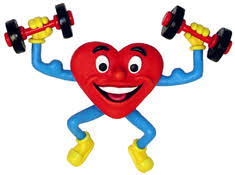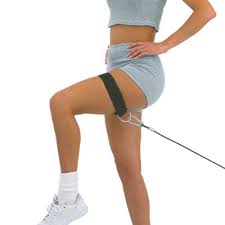 Here’s one interesting article from the Harvard Health Publications HealthBeat on ways we can do to lower cholesterol naturally without meds:
Here’s one interesting article from the Harvard Health Publications HealthBeat on ways we can do to lower cholesterol naturally without meds:
_____________________________________________________________________________________________
15 tips for lowering your cholesterol naturally
Many factors contribute to the development of heart disease or stroke. Genes and gender play a role, but for most of us, what we eat is an important factor as well. The good news is that a few small changes to your diet can help lower your cholesterol, which in turn will lower your risk for heart disease and stroke. Here are 15 heart-healthy eating tips to help you in the fight against high cholesterol.
1. Eat meat sparingly. Relegate meat to a minor part of your diet instead of making it the centerpiece of most meals. Trim off fat and skin from meats and poultry. Avoid fatty cuts of beef, pork, and lamb; instead choose lean meats, or substitute fish or skinless white-meat poultry. When dining out, choose a smaller portion of meat, or meatless pasta or fish dishes.
2. Opt for low-fat dairy products. Avoid dairy foods that contain whole milk or cream; instead, use low-fat or nonfat versions.
3. Watch the snacks. Choose low-fat snacks (homemade popcorn, carrots, dried fruits, or fresh fruits) instead of high-fat ones (potato chips and candy bars). Avoid store-bought bakery products unless they are explicitly low in saturated fats and free of trans fats.
4. Cut down on saturated fat in cooking. Use liquid cooking oils rather than butter or margarine. Use nonstick pans. Instead of frying your food, bake, broil, roast, steam, or stew. Discard drippings, and baste with wine or broth.
5. Avoid palm and coconut oils. Most vegetable oils are unsaturated, but these two contain mostly saturated fat. Choose canola, sunflower, safflower, corn, soybean, olive, and peanut oils.
6. Reduce dietary cholesterol. Strive to eat less than 200 mg of dietary cholesterol a day. Limit eggs to no more than four egg yolks per week; two egg whites can replace a whole egg in most recipes. Limit lean meat, fish, and poultry to no more than 6 ounces per day (a 3-ounce portion is about the size of a deck of playing cards). Stay away from cholesterol-rich organ meats, such as liver, brains, and kidneys.
7. Increase complex carbohydrates and fiber. Emphasize foods with complex carbohydrates—such as fruits and vegetables, whole-grain products, and legumes (dried beans and peas)—that are low in calories and high in fiber. Eat more water-soluble fiber, such as that found in oat bran and fruits. This type of fiber can significantly lower your blood cholesterol level when eaten in conjunction with a low-fat diet.
8. Eat fruits and vegetables. To protect your heart, eat plenty of fruits and vegetables.
9. Go for nuts. Nuts are associated with a lower risk of heart disease. They’re a healthful and filling source of protein, but go easy on them; they have lots of calories, so too much could cause weight gain.
10. Add fish to your diet. Countries with high fish consumption have a lower risk of death from all causes as well as from cardiovascular disease. Like nuts, oily fish contain the essential fatty acids known as omega-3s and omega-6s. Since our bodies can’t make these, we have to eat foods that contain them to gain their benefits, which include improved cholesterol levels.
11. Reduce salt intake. High blood pressure is a major risk factor for cardiovascular disease. Diets high in salt increase risk of hypertension.
12. Avoid trans fats. According to the Institute of Medicine’s Food and Nutrition Board, there are no redeeming qualities to trans fats, and no safe levels. They raise LDL cholesterol and lower HDL cholesterol. The National Cholesterol Education Program urges people to eat as little as possible. Avoid or eat only very small quantities of foods that list hydrogenated oil or partially hydrogenated oil among their first ingredients. These products contain a lot of trans fat.
13. Drink alcohol only in moderation. Regular, moderate drinking can reduce the risk of cardiovascular disease, but heavy drinking negates the benefits. Moreover, the advantages aren’t strong enough to recommend alcohol for anyone who doesn’t already drink. For those who do, the Dietary Guidelines for Americans recommend no more than one drink a day for women, and one or two drinks a day for men.
14. Read labels carefully. Avoid prepared foods that list any of the following among the first few ingredients: meat fat, coconut or palm oil, cream, butter, egg or yolk solids, whole milk solids, lard, cocoa butter, chocolate or imitation chocolate, or hydrogenated or partially hydrogenated fat or oil. Watch out for fast foods and other unlabeled products; when you don’t know what you’re getting, eat sparingly.
15. Change strategies. If three months of healthy eating doesn’t bring your total and LDL cholesterol levels into the desired range, consult your physician and a dietitian. If the numbers still don’t budge after six months, it may be time to consider medication.
___________________________________________________________________________________________
Simple measures we can at home to avoid getting th compications associated with a high cholestrol level in the blood. High cholesterol levels have been shown to increase ones risk to suffer from stroke and heart attack.
The good news is , we now have ways to control and lower the cholestrol levels by taking care of what we eat and through medications.
Be Health Smart and Check the Labels!











 Know The HEALTH FACTS ... Because WEALTH THRU PERSONAL HEALTH is a COMMITMENT... NOT A CHOICE!
Know The HEALTH FACTS ... Because WEALTH THRU PERSONAL HEALTH is a COMMITMENT... NOT A CHOICE!
 The Total Number of Visitors to the site since August of 2006
The Total Number of Visitors to the site since August of 2006










